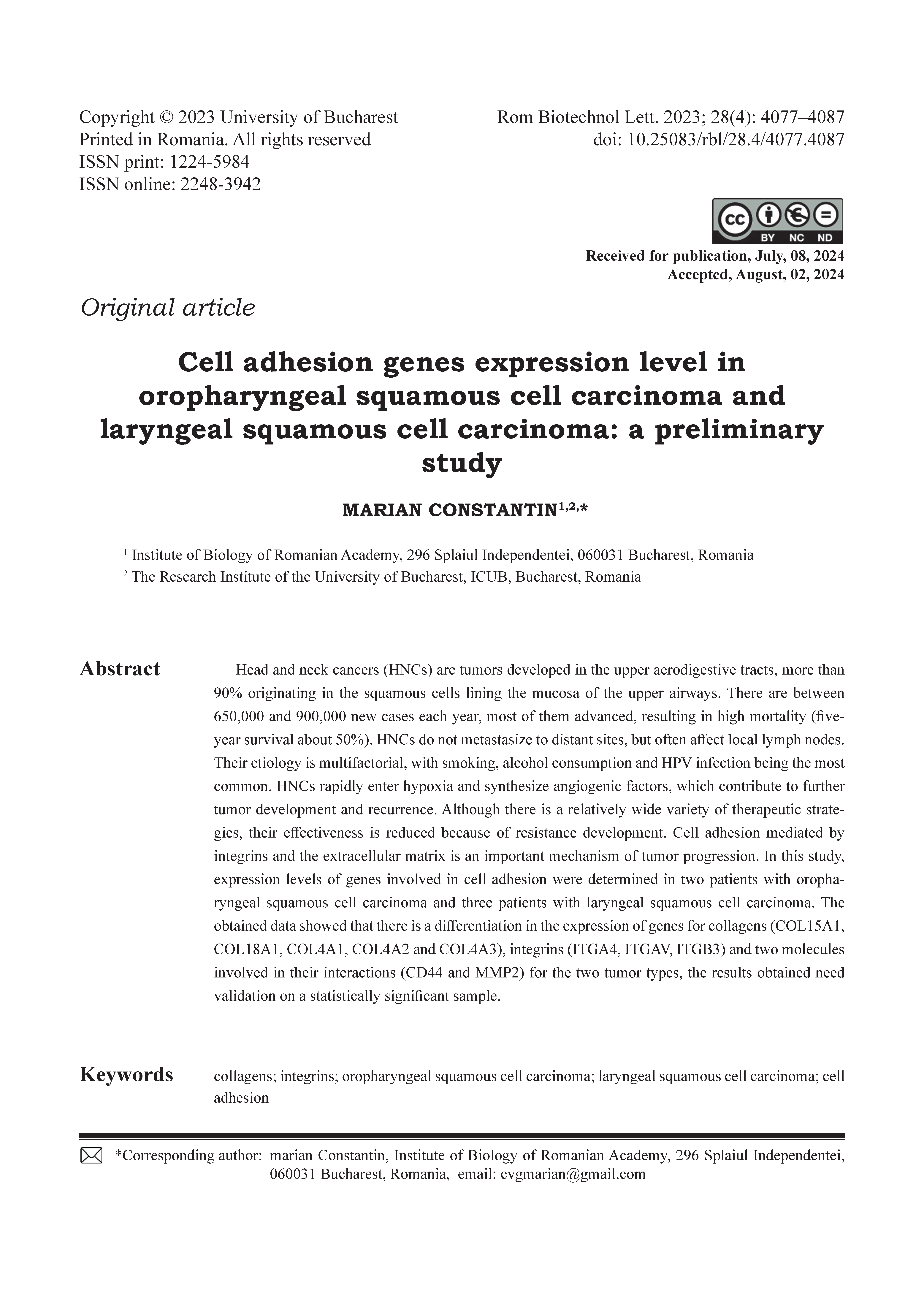Cell adhesion genes expression level in oropharyngeal squamous cell carcinoma and laryngeal squamous cell carcinoma: a preliminary study
DOI:
https://doi.org/10.25083/rbl/28.4/4077.4087Keywords:
collagens, integrins, oropharyngeal squamous cell carcinoma, laryngeal squamous cell carcinoma, cell adhesionAbstract
Head and neck cancers (HNCs) are tumors developed in the upper aerodigestive tracts, more than 90% originating in the squamous cells lining the mucosa of the upper airways. There are between 650,000 and 900,000 new cases each year, most of them advanced, resulting in high mortality (five-year survival about 50%). HNCs do not metastasize to distant sites, but often affect local lymph nodes. Their etiology is multifactorial, with smoking, alcohol consumption and HPV infection being the most common. HNCs rapidly enter hypoxia and synthesize angiogenic factors, which contribute to further tumor development and recurrence. Although there is a relatively wide variety of therapeutic strategies, their effectiveness is reduced because of resistance development. Cell adhesion mediated by integrins and the extracellular matrix is an important mechanism of tumor progression. In this study, expression levels of genes involved in cell adhesion were determined in two patients with oropharyngeal squamous cell carcinoma and three patients with laryngeal squamous cell carcinoma. The obtained data showed that there is a differentiation in the expression of genes for collagens (COL15A1, COL18A1, COL4A1, COL4A2 and COL4A3), integrins (ITGA4, ITGAV, ITGB3) and two molecules involved in their interactions (CD44 and MMP2) for the two tumor types, the results obtained need validation on a statistically significant sample.





